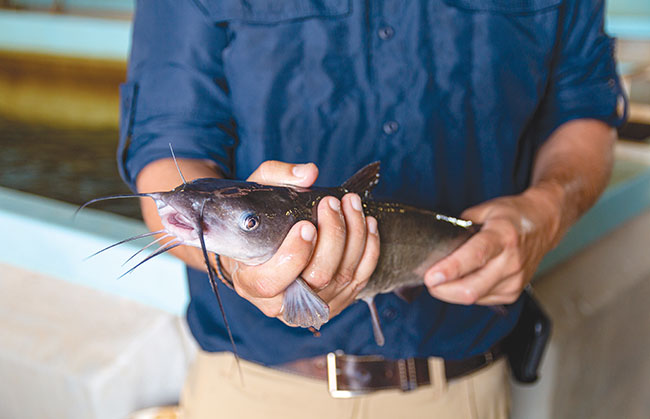
Catfish are fascinating creatures found in freshwater environments worldwide. They are popular targets for anglers due to their size, strength, and unique appearance. However, handling catfish can be tricky due to their strong spines and potential for injury. This guide provides a step-by-step process on how to safely and effectively hold a catfish.
Understanding Catfish Anatomy
Before attempting to hold a catfish, it’s essential to understand its anatomy:
- Spines: Catfish have sharp spines on their dorsal (top) and pectoral (side) fins. These spines can puncture the skin and cause painful wounds.
- Skin: Catfish lack scales but have a slimy, mucus-covered skin that makes them slippery.
- Mouth: While catfish have strong jaws, they don’t have sharp teeth. Instead, their mouths are equipped with thousands of tiny, sandpaper-like teeth.
Safety Precautions
- Wear Gloves: Using gloves can provide a better grip and protect your hands from the catfish’s spines and abrasive skin.
- Have a First Aid Kit Ready: In case of any puncture wounds or injuries, having a first aid kit nearby is essential.
- Be Calm and Gentle: Sudden movements can stress the fish and increase the risk of injury to both you and the catfish.
Read Also: Fish Feed Consumption Chart and The Best Specie of Fish to Raise
Step-by-Step Guide to Holding a Catfish

- Catch the Catfish Safely
- Use appropriate fishing gear and techniques to minimize harm to the catfish.
- Once caught, allow the catfish to tire itself out before attempting to handle it.
- Identify the Spines
- Locate the dorsal and pectoral fins. These fins have the sharp spines you need to avoid.
- Positioning Your Hands
- With one hand, firmly grip the catfish behind the pectoral fins. Your thumb should be on one side of the fish, with your fingers wrapped around the other side.
- Ensure your grip is just behind the spines to avoid being poked.
- Supporting the Catfish
- Use your other hand to support the belly of the catfish. This helps to distribute the weight and prevent injury to the fish.
- If the catfish is particularly large, you may need a second person to help support its weight.
- Holding the Catfish
- Keep the catfish close to your body to prevent it from thrashing. Holding it horizontally is usually the most secure position.
- Maintain a firm but gentle grip. Too much pressure can harm the fish, while too little can allow it to slip away.
- Handling the Catfish Out of Water
- Minimize the time the catfish spends out of the water. Prolonged exposure to air can be harmful.
- If you need to take a photo, have the camera ready to minimize the time the fish is out of the water.
- Releasing the Catfish
- When releasing the catfish, gently lower it into the water.
- Allow the fish to swim out of your hands on its own. Forcing it can cause injury.
Read Also: An Estimate on the Cost of Raising 1,000 Fishes to Market Size
Tips for Different Catfish Species
- Channel Catfish: These are the most common and are relatively easy to handle if you avoid the spines.
- Flathead Catfish: Known for their size and strength, they require a firmer grip and more support.
- Blue Catfish: These can grow very large, so extra care is needed to support their weight and avoid stress.
Handling Injuries
If you get punctured by a catfish spine:
- Clean the Wound: Immediately clean the wound with soap and water to prevent infection.
- Disinfect: Apply an antiseptic to the wound.
- Monitor: Keep an eye on the wound for signs of infection, such as redness, swelling, or increased pain.
- Seek Medical Attention: If the wound shows signs of infection or if you experience severe pain, seek medical attention promptly.
Conclusion
Holding a catfish requires knowledge, preparation, and care. By understanding the anatomy of the catfish and following the steps outlined in this guide, you can safely handle these unique fish without causing harm to yourself or the fish. Whether you’re catching catfish for sport or study, respecting the animal and handling it responsibly ensures a positive experience for both you and the catfish.





